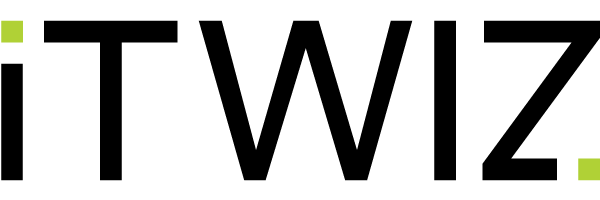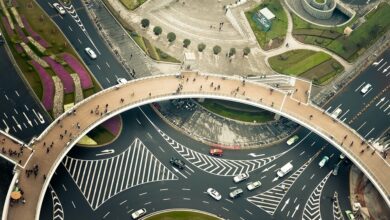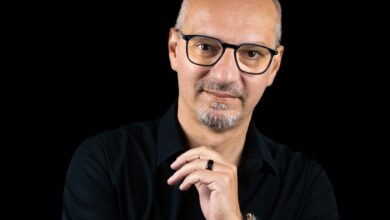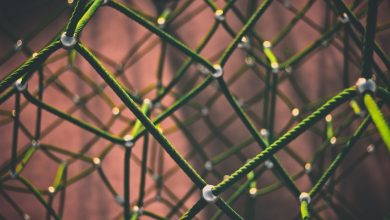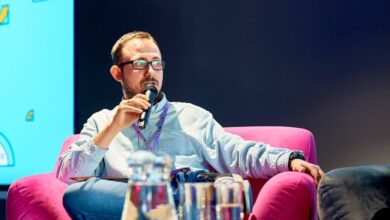Creative CollisionsIn English
After Smart City, it will be time for Nature Smart City
CREATIVE COLLISIONS
With Dr. Anne Stenros, an architect with a doctorate in technology and the first-ever CDO project director for a city, specifically Helsinki, Waldemar Olbryk and Przemyslaw Zakrzewski discuss “urban” innovation and its role; the scenarios that have been created for the city of Helsinki, with citizen well-being and experience at the center; regenerative design; Geodesign; rebuilding and restoring the human-nature connection; and the use of public data.
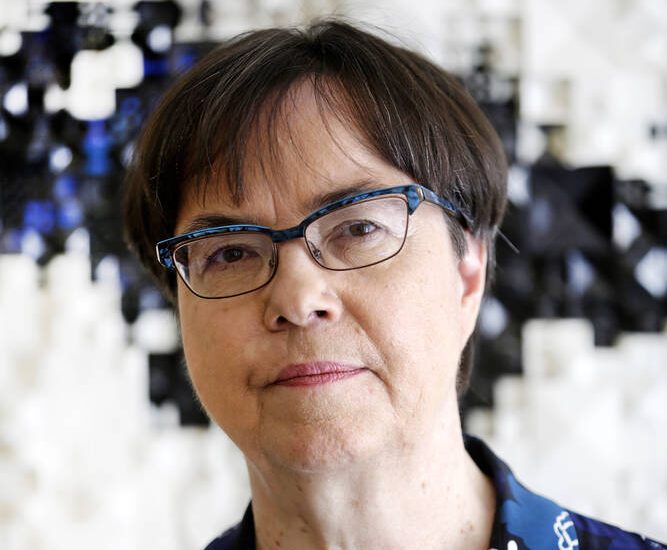
Waldemar: What was one of the first innovations in European cities?
Cafés. Coffee was introduced into Europe in the 16th century. The first shipments of coffee were brought from Turkey to London. Around 1652, the first cafés were opened there and from then on European cities were never the same. Why is this so important? Cafés became the hubs and a source of innovation.
Waldemar: Until then, people drank alcohol in pubs. Suddenly people started to meet while sober, over coffee. And talk.
Exactly. For the first time, people from different strata of society met sober. Merchants met other merchants, artists, and doctors in the cafés. And suddenly, these people started exchanging ideas from different fields. Something like a cross-pollination of thoughts, or exchange of ideas, etc., began to take place. Thanks to cafés, this happened for the first time throughout Europe. That was a kind of a starting point. Observing this process, one can wonder what the role of innovation in cities is.
Przemysław: Crucial. Essential. Pivotal
It’s vital. But it would also be worth considering what innovation itself is. In 1989, there was a wonderful book published in the USA called ‘The Great Good Place’, introducing the concept of the Third Place. The idea was that you have a home, you have your workplace and a third place in between…
Przemysław: Exactly. Nowadays, these ‘third places’ can again be cafés. The whole concept of Starbucks is based on this idea.
Again, cafés, but also shops, restaurants, and bookstores, libraries. Anything.
Waldemar: Ray Oldenburg wrote an important book.
Very important. But notice that we don’t currently have places in cities that are ‘updated’ to exactly the present moment. Going further, I am convinced that this ‘third place’ is now happening in social media. Of course, it is a virtual place on the internet and not somewhere in the city. But it is there.
Przemysław: Are you afraid of this? Of social media being the most important determinant of what a person can say about themselves or another person?
I think we need to see another person face to face for something interesting to happen. To create the right innovations through serendipity and creative collision.
Waldemar: The anonymisation factor also plays a big role in all this. You are anonymous on the internet.
There are two sides to this phenomenon. People can say whatever they want, based on what they happen to feel. They don’t have to take any responsibility for what they say. They are anonymous online.
Waldemar: Social media make great use of this opportunity.
Online you have no responsibility. Unlike in a café, face to face. If innovation were to happen somewhere again, it would be at these intersections.
Innovative cityWaldemar: When you started working in Helsinki as a Chief Design Officer CEO of the city, what was your idea? What did you start with? What idea would you start with today?
Przemysław: By the way, we would like to get you to answer the question: what is a smart city today?
I would be happy to answer. At that time, I immediately sensed that among so many technologies, we needed more human influence and human presence. So, we created a trend map, and based on that, we developed scenarios for the city of Helsinki. We put the well-being and the citizen experience at the heart of the map. To be honest, it was a completely different idea than the original approach behind Helsinki as a smart city.
Waldemar: What was the reaction of people around you to this kind of idea?
I remember the first workshop. We called it a Creative Camp, and about 40 city officials showed up. The best people we had. I talked about the citizen experience, the well-being, and the happiness of the citizens. And they just sat there. It was only after two hours that I noticed that about three people in the front row started nodding their heads slightly.
Przemysław: Did you believe then that something could be changed?
Not really. I thought that for the first time, we had managed to plant the seeds of new thinking. Two months later, we had a second workshop. And even the people in the second row started nodding their heads. And finally, after two years, I was getting a lot of questions about when the next creative camp would be. It worked out.
Regenerative Design, Regenerative Architecture, Geo DesignWaldemar: So what kind of an ‘innovative city’ will it be now?
I found a fantastic term a few days ago. I was reading the new ‘Time’ magazine and statements of a woman involved in regenerative agriculture.
Przemysław: How exactly do you define this term?
It means that you use the natural flow and natural systems of each location. And you improve them so that the end result is nature positive. We can apply this and talk about regenerative architecture. And that is beautiful, because I read that it is the revitalisation of natural systems by using living systems. Interestingly, these concepts can also be applied to climate change and even social inequality. All these things have/can have a regenerative character.
Przemysław: And how would you answer the question, is there any definition of a smart city that does not age over time? Is a smart/innovative city a very different thing than it was six years ago? What challenges do smart cities face today? Are they evolving with the world?
Well, there was a Smart City, and there still is a smart city. But I think we’ve all learned in recent years that there is much more than just being technologically smart. So, you could say yes: Okay, Smart City, you’ve done pretty well so far, but the next one will be the Nature Smart City
Waldemar: A smart city through harmony with nature?
It’s about reconnecting with nature and rebuilding, restoring the human-nature connection. About focusing not only on how people can live well, but also on how nature is doing well among us. So not only do people learn from nature, but they return to that old path they used to walk together. Like indigenous people understood and respected the surrounding nature.
The role of dataPrzemysław: And this is where geodesign comes in, which I’m sure you’d like to say more about.
I understand the word as a way of composing/programming a smart city based on the learning from and of nature. But because we live in a digital world, there is also the so-called geodesign, which I recently learned a bit more about. Geodesign uses open local data available in certain geographical location. It takes into account, for example, biodiversity, bird migrations, natural soil parameters… the list could be endless.
Waldemar: Exactly for what purpose does this happen?
With tools, you can get all kinds of data from nature/wildlife. And then you can create a digital twin from that. You can also make this data available to architects, designers, and urban planners so that when they come up with new ideas, designs and proposals they can simulate what will happen to the natural and built environment.
Przemysław: A very good direction.
Very necessary. As I said before: we have to learn to live in cities with nature again. It’s all about the green infrastructure vs. the grey one with roads, pipes etc.
Co-creationWaldemar: Let’s go back to the time when you were supervising design processes in Helsinki. You observed the interaction between the city authorities and individuals, companies, and activists. How do you bring this together so that something creative comes out of it?
I think a very good way to do this is the action proposed by Helga Nowotny. It was Novotny who once said that when designing the cities of the future it is about co-creation. Working together to the extent that you can involve citizens, the private sector, the public sector, and also young people.
Przemysław: The more people are involved, the better?
In the case of Helsinki, we created four future scenarios for the city development and discussed them with the top city managers. I noticed that it was easier for them to refer to these specific scenarios rather than having an open-ended discussion about the future. The scenarios spell out what areas specific should bring up in the discussion. Several leaders told me later that it was the first time that they had a value discussion about the direction of the future strategy. I think that this kind of facilitated discussion about values between different stakeholders as a diverse group of people is very important.
Waldemar: Nowadays, as you point out, we are not just talking about creation or a collaboration project, but co-production. And that implies that the stakeholders, all of them, are involved from the very beginning to the very end.
Yes, everyone is involved in the process of building the vision of the future together. People need to be involved. And I’ve been highlighting this recently because we have a huge well-being deficit among people, especially among young people. If we involve more young people for future building, we empower them and give them the tools and hope that something can be done.
Waldemar: It doesn’t always work. It sounds like a hackathon with citizens could be one of the magic solutions for people to work out scenarios for the development of their cities. Of course, that’s just one tool.
And if you include young people, they can come up with great ideas, since they are already living the future.
Przemysław: This aspect was one of the things we discussed a lot before our talk. How to educate young people to build the cities of the future. You know, what kind of activities we need to start with them. To make sure that they are fully equipped with the tools, the knowledge and the mindset to build a city that meets their requirements. And then, the requirements are calculated for the future which will probably arise. We are a little bit in a situation where we see the city designers as a team of people with a certain experience, of a certain age. But I believe that we should understand that my children, teenagers in 3-5 years, will also be able to propose something fantastic. A bit like the beginning of your story about cafés, ‘places with coffee’.
I would very much like that.
Przemysław: Connecting people from different dimensions, from different social strata. Making sure there are links between them. Clashing people with different physical and mental cultures and different points of view with each other. I, at least, believe that this is a kind of definition of a modern, intelligent and future-oriented city. Yes, a people-oriented city.
Yes, because creativity and innovation are supported by diversity, and because when thinking about the future of cities, we will need all stakeholders included, even the next generations to come. I will explain this to you with an example. One of our competition proposals was a set of workshops with teenagers. We wanted to show the young people how to think about the future city. We proposed a thought exercise to imagine the future as a stage, a pavilion, or an exhibition.
Let’s say in the year 2060, when – probably – nature will take over our cities again. Otherwise, the citizens will not survive. So, we proposed that this pavilion, where the exhibition will take place, will be taken over entirely by greenery. Perhaps one that is edible. After all, we are talking about cities that will be able to produce food for us. The idea is that we plant that kind of plants that can be a source of food for us. In this future pavilion, we are going to have cooking lessons for young people and we will also set up futuristic workshops for them.
Waldemar: Again, a café…
It will literally be like a world café. One big table so people can gather around it for an inspiring dialogue. And usually, when you’re having a coffee or eating something, you get relaxed and start sharing ideas.
Waldemar: Since we’re going back to cafés again, it’s worth pointing out that the ones in England that were close to big universities were called penny universities. The principle is simple: you buy a coffee and talk to a professor you wouldn’t normally meet. When I think about it, I really believe in this magic liquid called coffee (laughs).
TechnologyPrzemysław: We wouldn’t be having this conversation if it wasn’t for the turn towards technology again. I, for one, believe that technology is not a good master, but a good servant. And I would like to keep it in that position in my mind. In the last year, I’ve been reading a lot about the relationship between technology and human nature.
Waldemar: Nature again…
Let me come back to geodesign again. By using technology wisely, you can use this local knowledge in a wider context. We can clearly see that we are moving away from the era of globalisation towards the era of microlocalism and this is happening in every sector, everywhere. Geographic design is just one example of that, because it uses local knowledge about people, about data, about everything. The complexity of the knowledge and data available in cities is becoming overwhelming, but if you have the right technologies to bring it together and make it useful through digitalisation, you’ll be fine.
Przemysław: And you are not afraid of data being used for the wrong purpose?
No, today there is another problem. Namely, defining the boundary of which data is ethical. Again I will refer to the thread of our discussion about designers. This is something I learned from a trend researcher friend who lives in London. He told me that ethical digital design is nowadays the name of a certain game. So, we need to understand how we use data. And how it was collected. As designers, we should also consider the consequences of the design. For example, cheap clothes made somewhere where there may be such problems as child labour. But there are responsible people, who can check where the things they use, buy etc., come from.
Waldemar: So, we are getting into the concept of traceability of products and the whole production chain. And we want to cooperate only with those companies that we know how the product they are producing or supplying got to us.
Przemysław: Exactly.
Yes. Yes. While working at the City of Helsinki, I was alert when I heard that there were open data sources for anyone who wanted to create an app. And that the Smart City app can use them. I was afraid, for example, that anyone would know at which metro station there was the largest crowd of people at a given moment. This could be dangerous since we know very well that data can be used for good or evil. When sharing data, we have to consider about whether it can also be used for the harmful purpose.
Waldemar: As a designer, you need to think about this.
Przemysław: Going back to your example about measuring crowds of people at metro stations in Helsinki. Personally, I am a supporter of open data. I think they contribute to more innovation in a city if the data is used in the right way.
Waldemar: You obviously have a good purpose in mind.
Przemysław: Of course.
And I don’t want all data to be publicly available. I honestly don’t want that.


